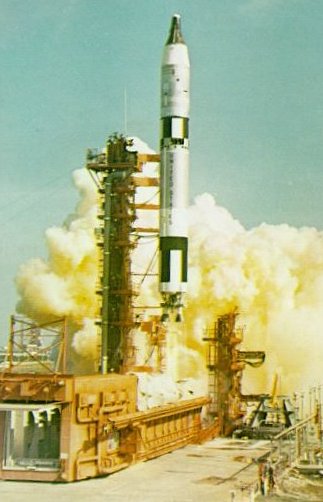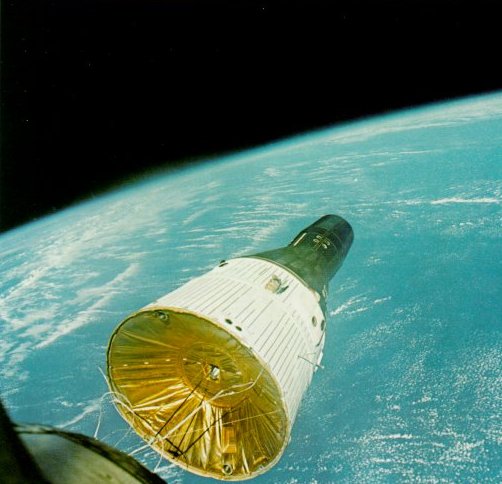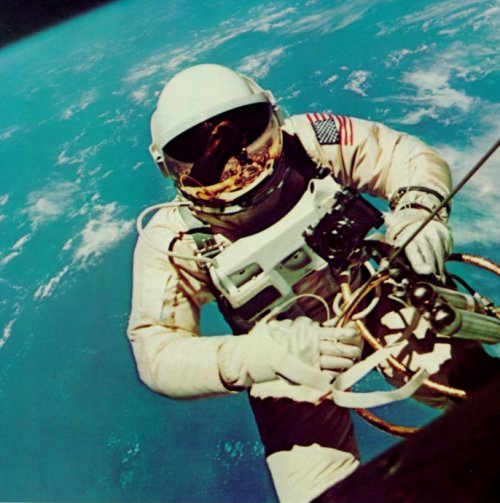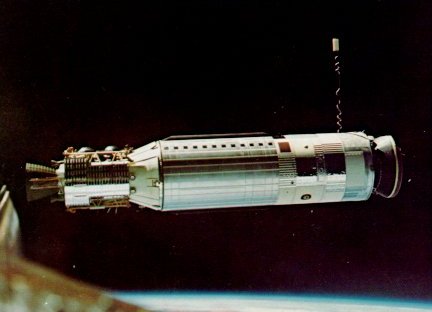















|

| Gemini launches drew hundreds of thousands of spectators, awed by the roar, flame, and smoke of the big Titan II booster. Viewers clogged the highways and camped by roadsides. Millions of others watched launchings an television, and the astronauts received tumultuous welcomes on their return. The launch at left is Gemini V, which carried Astronauts Cooper and Conrad for 120 revolutions of the Earth during August 1965. Fuel cells had their first space test an this flight. |

|
| First U.S. rendezvous in space occurred an December 15, 1965, when Gemini VI found and came within 6 feet of Gemini VIl, which had been launched 11 days earlier. Picture below was shot by Tom Stafford, aboard Gemini VI with Wolly Schirra. The other spacecraft, shown here at a range of 37 feet, was flown by astronauts Borman and Lovell in a flight lasting more than 330 hours. Rendezvous proved entirely feasible but tricky to manage with minimum fuel use. |

|
| Astronaut Edward H. White was the first American to step outside in space. Jim McDivitt, Gemini IV's command pilot, took this picture on June 3, 1965. A 25-foot umbilical line and tether linked White to the spacecraft. In his left hand is an experimental personal propulsion unit. His chest pack contained an eight-minute emergency oxygen supply, as a backstop. |

|
| An Agena target vehicle was docked with by Gemini VIll on March 16, 1966. A short-circuited thruster set the two craft spinning dangerously, forcing Astronauts Armstrong and Scott to end the mission. |


